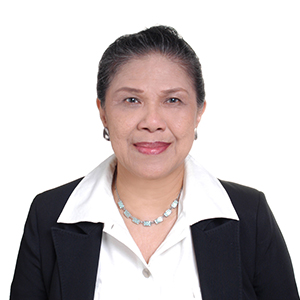Koay Siew-Chuan Evelyn
HONORARY FELLOW, NUS (2020-2025)
ASSOCIATE PROFESSOR, NUS (1991-2020)

Email
patkoaye@nus.edu.sg
Telephone
+65 6772 4564
ORCID
HONORARY FELLOW, NUS (2020-2025)
ASSOCIATE PROFESSOR, NUS (1991-2020)
Translational: Validation of platform/ technology for capture and isolation of circulating tumour cells (CTCs) and development of downstream molecular profiling strategies for CTCs as non-invasive “liquid” biopsy materials – bringing the technology from bench to bedside and enabling routine diagnostic applications.
A/P Evelyn SC Koay is a biochemist and molecular biologist with PhD (Biochemistry), MSc (Molecular Biology), MAACB, FAACB (Clinical Biochemistry) and FRCPath (Chemical Pathology) qualifications. Her specialty areas are Clinical Biochemistry (Chemical Pathology), Molecular Pathology & Genetics. After graduating with PhD in 1984, she joined the National University of Singapore as Lecturer, Department of Biochemistry, in Jan1985. In an NUS career that spans 35 years, Dr. Koay attempted to fulfil the three fundamental tenets of teaching, research, and clinical service that NUS emphasizes. From 1985 to 2017, she also held a joint appointment at the National University Hospital Singapore as senior clinical biochemist at the Department of Laboratory Medicine’s clinical diagnostic laboratories. In 1990, she set up the Special Chemistry and immunoassay sections within the Clinical Chemistry Division and was also involved in establishing the Joint NUH-Ngee Ann Polytechnic Diploma in Biomedical Science (Clinical Laboratory Technology) to train medical laboratory technologists for the local healthcare sector.
Dr. Koay was transferred to the Department of Pathology and promoted to Senior Lecturer in 1988 and tenured in 1991. During her sabbatical (1991-92), she undertook the MSc in Molecular Biology course at University College London, under NUS sponsorship. On her return to NUHS, she was recruited by the NUH Research Director to help set up the NUH DNA Research Lab and oversee its operations from 1993 to 1998. In April 1998, this research core facility was converted into the Molecular Diagnosis Centre (MDC) to provide molecular diagnostic tests for NUH patients. The MDC was the first molecular diagnostics lab in Singapore to be accredited by the College of American Pathologists (in 1999) and the Singapore Accreditation Council (in 2001) and served as a referral laboratory for specialized tests and for pathology resident training in molecular diagnostics. Dr. Koay served as its Director (2001-2016). Whilst their primary duties were to provide reliable molecular diagnostic test services, Koay and her MDC staff were involved in molecular pathology translational research projects, in collaboration with NUH/NUS clinicians and others interested in studying disease mechanisms/therapeutic correlations. These efforts led to >100 publications. On the NUS front, Dr. Koay continued with her own research projects, working at the Pathology R&D lab with grant-funded personnel (RFs/RAs), focusing on (i) breast cancer biology and treatment, and (ii) use of circulating tumour cells(CTCs) as liquid biopsies for diagnosis of breast cancers and for monitoring such patients during and post-treatment. The CTC-based studies resulted in numerous publications and 3 patents filed by ETPL, A*-STAR. Dr. Koay was also involved in teaching various undergraduate modules at NUS Faculty of Medicine and Faculty of Science. From 1985-2019, she taught NUS medical students (Years 1-4), Science students (Year 3, Biochemistry), Pharmacy students (Year 2/3), served as Postgraduate Programme Director (Department of Pathology), and was involved in module development and course curriculum. She co-authored five textbooks with two Australian pathologist colleagues, and served as a Member, Board of Examiners, Australasian Association of Clinical Biochemists Membership and Fellowship (Professional) examinations, in 2001-2005. She was awarded a 5-year Honorary Fellowship by the NUS Yong Loo Lin School of Medicine in 2020 and remains active post-retirement.
These are texts based on the authors’ experience of teaching clinical chemistry (chemical pathology) to medical students and to postgraduate students taking chemical pathology, clinical chemistry, and other medically-related examinations. They cover the biochemical basis of disease and provide a basic understanding of the relationship between abnormal biochemical test results and disease states. A rational approach to proper selection and interpretation of biochemical investigations is adopted for each organ system or analytes covered in the 28 chapters of each textbook.